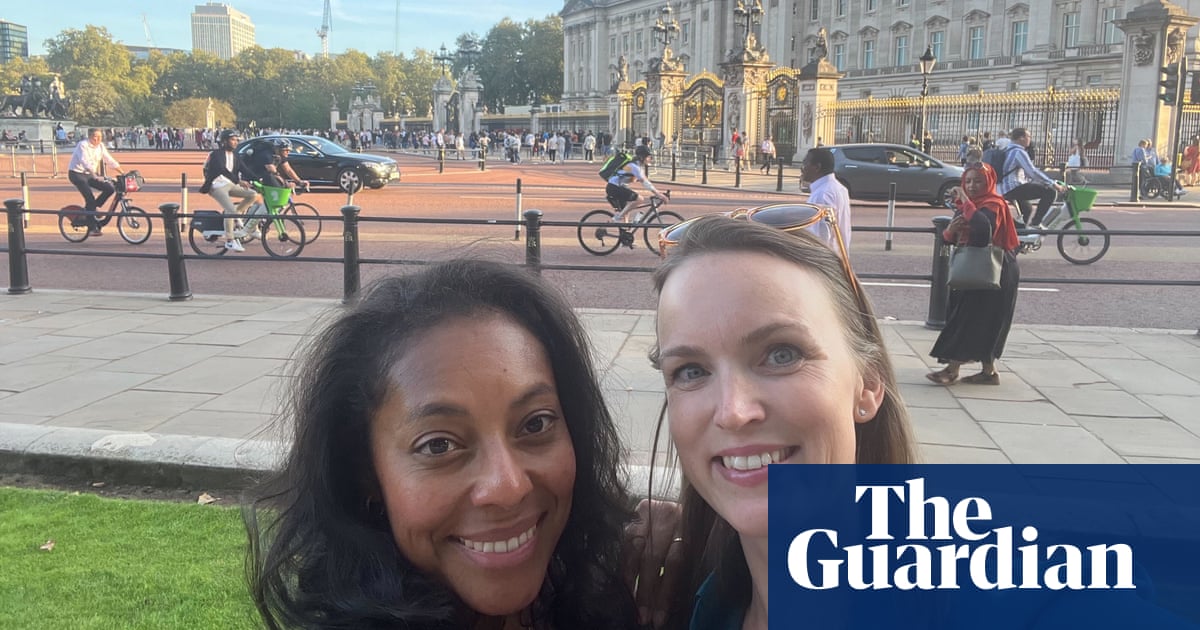
The thing that might surprise you about Ibiza is the quiet. Even in August, there are pockets of tranquillity all over the island. Walking along the nature trail between and behind two of its most famous beaches – Es Cavallet and Ses Salines – you hear nothing but the chirp of cicadas and the soft whisper of the Mediterranean. You will also see, if you turn away from the dunes and pinewoods, the salt pans that dominate this southern tip of the island with an almost eerie stillness, a flamingo or two standing like ornaments on the mirror-like water.
As with many parts of Ibiza – from the hilly forests of the north to the views of the rocky islet of Es Vedrà in the south – it is easy to feel like you have passed into another world. Even more so if you catch them at sunset, when the sky becomes gold and whatever clouds are around become luminous lines of orange-like furrows in some heavenly field.
Yet this was an Ibiza I never really sought to discover when I lived and worked here in the 1990s. Back then, I worked for the largest club night on the island, Manumission at the colossal Privilege club. The late 90s are now considered to have been Ibiza’s wildest decade, an era when superclubs such as Pacha, Space and Amnesia still had their magic and were run by a pretty chaotic band of entrepreneurial club promoters, rather than the slick brand managers who handle things today.
This was when San Antonio’s Café del Mar was not only a place to sip beer while watching the sunset but also had its own series of best-selling compilation albums that almost single-handedly popularised the concept of “chillout music”.
It was the era of Sky TV’s messy documentary series Ibiza Uncovered, of sensationalist tabloid stories about Radio 1 DJs and pop stars going missing after wild benders. Ibiza hadn’t yet scrubbed up its reputation. The images of agroturismos, yoga retreats and luxury holidays had yet to take hold in the imagination of the British public.
From the hilly forests of the north to the views of the south – it is easy to feel like you have passed into another world
During this time I sold tickets at bars in San Antonio and Ibiza Town. I was a lost and insecure young person, fresh from overthinking my way through a master’s degree I’d only taken to delay joining the real world. I was increasingly dependent on alcohol and drugs until, in 1999, I decided to get healthy. I began running every morning. I quit drugs. I got more sleep. But things didn’t stay stable for long – I spiralled and had to return home.
Many years later, after another spell of abusing alcohol, I had the therapy I should have had back then. A key theme was facing up to my past, so I decided to revisit Ibiza, but this time out of season. The plan was to drive through France so we could take our dogs. And so this was a different me visiting what had become a different place with the safety of my favourite people and animals around me.
We got happily lost amid the streets of Dalt Vila, Ibiza’s fortified old town, which is now a Unesco world heritage site; we ate the best meal at a restaurant called Sharmakanda in the north (the edamame hummus is incredible); we wandered around the small but well-curated contemporary art museum; we went go-karting; we went horse riding; we went to Wild Beets vegan cafe in Santa Gertrudis. We did many things I’d never have considered doing when I lived here.
Some things weren’t quite so different. We danced. We went to the night market at Las Dalias, where everyone from babies to octogenarians dances under the stars to techno played by ageing German DJs. This feels close to the first era of clubbing here in the 70s, when entrance fees were low, roofs were nonexistent and the spirit was free. It was genuinely healing to return here, to see the place where I’d nearly died.
And it sparked an idea for a novel – one that could hopefully do justice to the different aspects of life here.
Over the next two years, we came back a few more times. I justified this in the name of “research”, and actually did learn a lot that could be used in the book. But we also holidayed. We hiked. We ate. We tried to improve our Spanish. We even – soberly, happily – raved. But I also saw problems I’d never noticed in my hedonistic youth.
Ibiza is multifaceted and has always attracted people wanting different kinds of escape. Years before ravers discovered ecstasy and the eclectic unifying music played by DJ Alfredo at Amnesia in the late 80s, artists and intellectuals such as Walter Benjamin flocked here to flee oppression. Stars from the golden age of Hollywood such as Grace Kelly, Liz Taylor and Laurence Olivier found it a safe haven, away from the spotlight. Cormac McCarthy spent his hippy years on the island. Joni Mitchell came and wrote some of her seminal Blue album while staying here and on the neighbouring island of Formentera. Bob Marley danced the night away at the long-gone Glory’s nightclub after playing a famous concert here.
Until the 80s, the impact of holidaymakers was relatively positive. Ibiza had been a poor island, so locals embraced them. Now, the relationship is more complicated
Yet now the island that used to be a retreat from trouble is itself the site of increasing turmoil. When I think about Ibiza nowadays, the word that comes to mind is “delicate”. It is in many ways a fragile place, which is why tourism has a big impact, and which explains the recent protests on the island against the impact of Airbnbs and cruise ships, which tilt the equilibrium like a gorilla on a seesaw. Until the 80s, the impact of holidaymakers was relatively positive. Ibiza had been a poor island, so locals embraced tourism with open arms. Now, the relationship is more complicated.
Some benefit, but many do not: having people sleeping in the woods or in their cars before going to work at restaurants with three-figure minimum spends is not sustainable.
The Ibiza seen from the yachts of Jeff Bezos and Leonardo DiCaprio is clearly a very different one from the Ibiza seen by a struggling family living out of a campervan in San Antonio. And the environment, too, can easily fall out of balance. For instance, the island now has snakes, thanks to them being accidentally imported with the fully grown olive trees ordered to decorate the gardens of villas.
And then there is the Posidonia seagrass meadow – a single organism, among the oldest on Earth, that is a highly effective carbon sink and critical to the ecosystem of Ibiza and Formentera, but which is under threat from pollution and boats. The great Ibiza Preservation non-profit organisation is working hard to protect the sea and land from some of these negative shifts, and I am trying to support them any way I can.
The island has many paradoxes. Hippy and capitalist. Loud and quiet. Timeless and totally 21st century
I realised I had an opportunity to include these issues in my book, to draw attention to the wonder of this place, and its contrasts and paradoxes. Hippy and capitalist. Loud and quiet. Timeless and totally 21st century. But also, while trying to convey its unique magic to those who roll their eyes at the very idea of Ibiza, I knew I had an opportunity to highlight the need to be aware of the issues here. To understand, ultimately, how the places we visit don’t just change us, but we change them.
So it becomes important to let beauty inspire us to tread gently, think about the finite resources of small islands, and help protect what nourishes us. Ibiza is a sacred place of light and magic. We who love it have a duty to help it stay that way.
The Life Impossible by Matt Haig is published by Canongate (£20). To support the Guardian and Observer go to guardianbookshop.com. Delivery charges may apply












